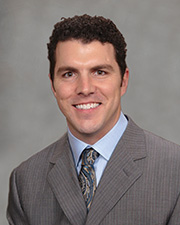General Neck Pain
What is Neck Pain?
Neck pain is discomfort in any of the structures of the neck, including muscles, nerves, bones, joints, and the disks between the bones. It can be the result of injury, disease, aging, or poor posture or body mechanics. Symptoms can include sensations of burning, shooting, tingling, and stabbing. Neck pain typically resolves with rest, exercise, medication, and self care, such as ice, heat, or massage. Patients with chronic neck pain that persists for more than three months may benefit from surgery, but surgery is not usually necessary.
Causes of Neck Pain
Muscle strain or tension can be caused from everyday activities, such as bending over a desk for hours, poor posture while watching TV or reading, positioning your computer monitor too high or too low, sleeping in an uncomfortable position, twisting and turning your neck in a jarring manner while exercising, or lifting objects too quickly or with poor posture. Injury or trauma can result in severe neck injuries, such as vertebral fractures, whiplash, blood vessel injury, and even paralysis.
More serious causes of neck pain are cervical spondylosis, herniated disk, pinched nerves, degenerative disk disease, cervical radiculopathy, small spine fractures caused by osteoporosis, cervical stenosis, or infections such as osteomyelitis, septic discitis, or meningitis.
UTHealth Houston Neurosciences pain management specialist Dr. Hiral Patel and neurosurgeon Dr. Joseph Hsieh discuss the causes of neck pain and different medical treatment options for it.
Signs of Neck Pain and Diagnosis
Visit your doctor if you experience sustained weakness, tingling, neck stiffness, difficulty turning your head, or pain that radiates down the shoulders or arms. Other symptoms may include headaches, difficulty lifting objects; trouble swallowing; and dizziness or balance problems. Severe nerve compression could result in a loss of bladder or bowel control and coordination problems.
If you have a fever, nausea, and headache with your neck pain, you may need urgent care for a meningitis infection. If your neck is so stiff that you are unable to touch your chin to your chest, seek immediate treatment.
Our spine specialists diagnose neck pain with a medical history, physical examination to detect tenderness and evaluate range of motion, X-ray, MRI, CT scan, bone scan, discogram, myelogram, or electromyography.
Neck Pain Treatment
For minor neck pain, your doctor may recommend over-the-counter pain relievers, such as ibuprofen or acetaminophen. Patients should apply ice for the first 48 to 72 hours, and then heat afterward. Stop normal physical activity for a few days, and do slow range-of-motion exercises, moving your head up and down and from side to side. Massage the sore areas and try sleeping on a firm mattress with a pillow that supports your neck. The majority of acute neck pain patients recover within two weeks.
Your physician may also recommend physical therapy, or corticosteroid or anesthetic injections administered by an interventional pain management specialist. Healthy lifestyle changes, including improving posture and lifting techniques, will often help patients. Strong, flexible muscles can help maintain good spine alignment, allowing a better range of movement and structural support.
Surgery is rarely recommended unless there is a notable disk herniation or cervical cord compression or if a patient’s symptoms are severe, including pain, muscle weakness, and balance and coordination problems. Your doctor will discuss the best options for your particular condition.
What You Can Expect at UTHealth Houston Neurosciences
The UTHealth Houston Neurosciences Spine Center brings together a multidisciplinary team of board-certified, fellowship-trained neurosurgeons, neurologists, researchers, and pain management specialists who work together to help provide relief for even the most complex problems. Your team will share insights, leading to better treatment decisions and outcomes.
We first investigate nonsurgical treatment options, including medical management, pain management, physical therapy, rehabilitation, and watchful waiting. When surgery is needed, our neurosurgeons routinely employ innovative minimally invasive techniques. Throughout the treatment process, we will work closely with the doctor who referred you to ensure a smooth transition back to your regular care. While you are with us, you will receive expert care, excellent communication, and genuine compassion.
Neck Pain Specialists
 |
Joseph Amos, MD | Clinical Assistant Professor | |
 |
Ashley Amsbaugh, MD | Clinical Assistant Professor | |
 |
Mark Burish, MD | Assistant Professor | |
 |
Nadya Dhanani, MD | Assistant Professor | |
 |
Hiral Patel, MD | Clinical Assistant Professor |
Anatomy of the neck and spine
The spine is divided into the following regions:
- The cervical region (vertebrae C1-C7) encompasses the first seven vertebrae under the skull. Their main function is to support the weight of the head, which averages 10 pounds. The cervical vertebrae are more mobile than other areas, with the atlas and axis vertebra facilitating a wide range of motion in the neck. Openings in these vertebrae allow arteries to carry blood to the brain and permit the spinal cord to pass through. They are the thinnest and most delicate vertebrae.
- The thoracic region (vertebrae T1-T12) is composed of 12 small bones in the upper chest. Thoracic vertebrae are the only ones that support the ribs. Muscle tension from poor posture, arthritis, and osteoporosis are common sources of pain in this region.
- The lumbar region (vertebrae L1-L5) features vertebrae that are much larger to absorb the stress of lifting and carrying heavy objects. Injuries to the lumbar region can result in some loss of function in the hips, legs, and bladder control.
- The sacral region (vertebrae S1-S5) includes a large bone at the bottom of the spine. The sacrum is triangular-shaped and consists of five fused bones that protect the pelvic organs.
Spine Disease and Back Pain
Arthrodesis
Artificial Disc Replacement
Cauda Equina Syndrome
Cervical corpectomy
Cervical disc disease
Cervical discectomy and fusion
Cervical herniated disc
Cervical laminectomy
Cervical laminoforaminotomy
Cervical radiculopathy
Cervical spondylosis (degeneration)
Cervical stenosis
Cervical spinal cord injury
Degenerative Disc Disease
Foraminectomy
Foraminotomy
Herniated discs
Injections for Pain
Kyphoplasty
Laminoplasty
Lumbar herniated disc
Lumbar laminectomy
Lumbar laminotomy
Lumbar radiculopathy
Lumbar spondylolisthesis
Lumbar spondylosis (degeneration)
Lumbar stenosis
Neck Pain
Peripheral Nerve Disorders
Radiofrequency Ablation
Scoliosis
Spinal cord syrinxes
Spinal deformities
Spinal injuries
Spinal fractures and instability
Spinal Cord Stimulator Trial and Implantation
Spinal Fusion
Spinal Radiosurgery
Spine and spinal cord tumors
Spondylolisthesis
Stenosis
Tethered spinal cord
Thoracic herniated disc
Thoracic spinal cord injury
Transforaminal Lumbar Interbody Fusion
Vertebroplasty
Contact Us
At UTHealth Houston Neurosciences, we offer patients access to specialized neurological care at clinics across the greater Houston area. To ask us a question, schedule an appointment, or learn more about us, please call (713) 486-8100, or click below to send us a message. In the event of an emergency, call 911 or go to the nearest Emergency Room.











